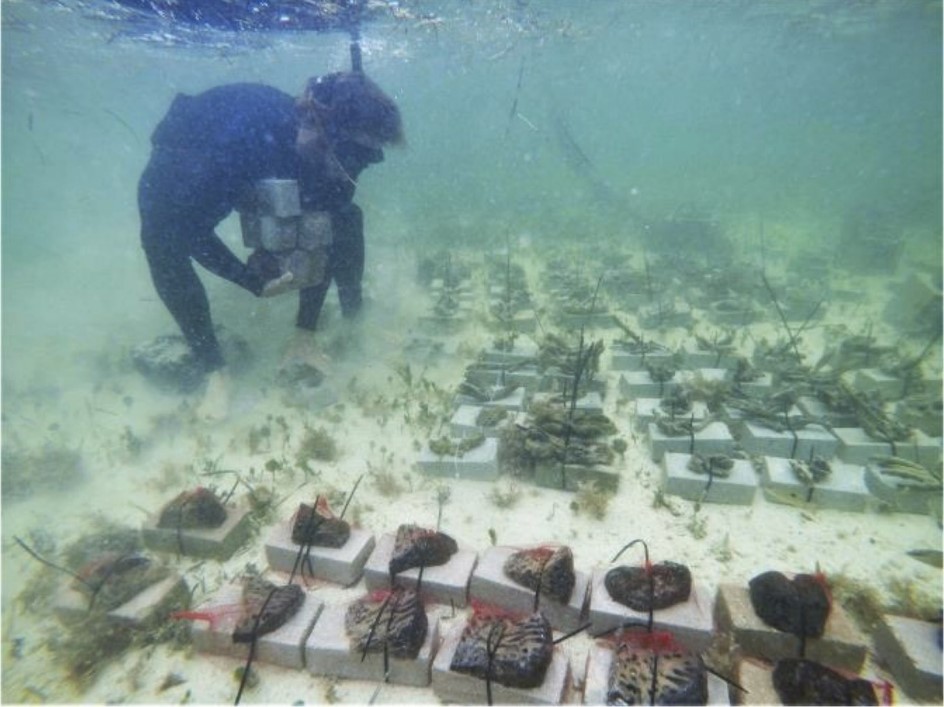
Researcher setting up sponge nursery with sponge cuttings attached to bricks with cable ties. It takes approximately 2–3 months for the sponges to adhere to the bricks. Credit: Butler et al. (2021).
A recent review article highlights lessons learned from three decades of research on how to restore sponges in Florida Bay. This body of research demonstrates that it takes a research-based approach, time, and a myriad of funding institutions and scientists to move the needle on how to restore an ecosystem.
Lessons learned include:
- In its former undisturbed state, it took approximately three days for sponges to filter the water of Florida Bay.
- The sponge communities in Florida Bay are different from neighboring coral reefs, so lessons learned on restoring sponges on coral reefs aren’t applicable.
- Sponges dominate the animal biomass of the Florida Bay benthos, representing more than 60 species.
- Sponge transplants should come from near the site to be restored to best retain the natural genetic composition of the communities.
- More biodiverse communities provide better ecosystem services than simpler communities.
- Restoring sponge communities decimated by algal blooms enhances natural recovery of sponge communities and the myriad ecosystem services they provide, including: water filtration, provision of nursery habitat for fishes and invertebrates, and the maintenance of natural underwater soundscapes.
Florida Bay, a shallow coastal lagoon mostly located in Everglades National Park, is a critical habitat for juvenile marine organisms, a source of biodiversity and productivity, and is economically important for the fishing and tourism industries. In the late 1980s, the widespread die-off of seagrasses in Florida Bay and the subsequent cyanobacteria blooms in the early 1990s led to a public outcry for something to be done. This resulted in the 1993 Executive Order issued by President Clinton to create a South Florida Ecosystem Restoration Task Force. The Task Force recommended the creation of an interagency program to improve the understanding of the changes in Florida Bay and identify what needed to be done to ameliorate the changes.
In response, NOAA created the Florida Bay Science Program (1994–2008), a cross-line office science program supported by the National Ocean Service, the National Marine Fisheries Service, and the Office of Oceanic and Atmospheric Research. NCCOS through its competitive research program’s predecessors (the Coastal Ocean Program and the Center for Sponsored Coastal Ocean Research) funded a portion of this work, along with the U.S. Environmental Protection Agency, Florida Sea Grant, the Florida Department of Environmental Protection, NOAA-Nature Conservancy Community Restoration Program, the Everglades National Park, the Florida Fish and Wildlife Conservation Commission, Bonefish & Tarpon Trust, the Florida Keys Environmental Fund, and the Nature Conservancy.
 Official websites use .gov
A .gov website belongs to an official government organization in the United States.
Official websites use .gov
A .gov website belongs to an official government organization in the United States. Secure .gov websites use HTTPS
A lock or https:// means you’ve safely connected to the .gov website. Share sensitive information only on official, secure websites.
Secure .gov websites use HTTPS
A lock or https:// means you’ve safely connected to the .gov website. Share sensitive information only on official, secure websites.